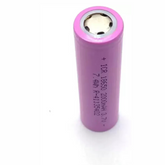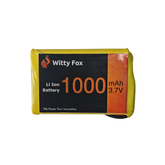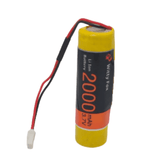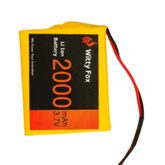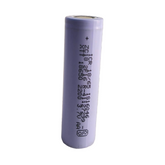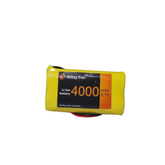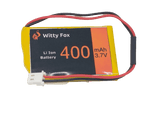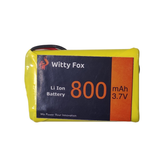Introduction to Lithium Ion Batteries and its Applications
Summary
Discover the power within your devices with our latest blog, 'Introduction to Lithium-Ion Batteries and its Applications.' Delve into the world of energy storage as we explore various battery types, highlighting the unmatched prowess of Lithium-Ion batteries. Unravel the secrets behind their widespread use in gadgets, electric vehicles, and renewable energy systems. Learn about the classification of cells and batteries, understanding the technology that fuels our modern world. Don't miss our insightful conclusion that ties it all together. Empower your knowledge, click to explore the future of energy storage!
Different Types of Batteries
Batteries are essential to our modern lives, powering an array of devices from phones and laptops to electric cars. Different types of batteries have different properties that make them suitable for specific applications.
Lead-acid batteries are one of the most commonly used battery technologies due to their long lifespan when maintained properly. Used primarily in starting systems such as automobiles, they can also be found in UPS systems and golf carts. Lead-acid batteries typically come with anywhere between 6 volts or 12 volts depending on the application requirements.
Lithium-ion (Li-ion) is a rechargeable battery technology increasingly being adopted across numerous products including smartphones, tablets, medical equipment and even spacecraft! Li-ion cells offer high energy density but require special care while charging/discharging cycles since overcharging may potentially damage its chemistry permanently.
read more : Automatic Battery Charging Circuit
Nickel Cadmium (NiCd) Cells represent another type popularly employed especially among cordless tools such as drills & saws etc thanks partly because NiCD packs tend not to suffer memory effects like other chemistries although life expectancy tends to lower compared to lithium variants here, particularly during heavy-duty usage scenarios requiring deep discharges & recharges.

Lithium Ion Phosphate Batteries( LFP ) - these latest generation cell designs boast very low self-discharge along temperature stabilities making excellent choices where both reliability and safety-critical factors often lifesaving ones too Electric car EVs.
read more : All About Lithium Polymer Batteries (LiPo)
Uses & Applications of Lithium-Ion Batteries
- Laptop batteries: Lithium ion (Li-ion) batteries are often used to power today's powerful laptops, providing a lightweight and long lasting solution for mobile computing needs.
- Portable electronics: Li-ion is the go-to battery choice for many of the world's portable electronic devices such as tablets, smartphones, digital cameras and camcorders due to its reliable performance in extended use applications.
- Electric vehicles: With their high energy density and excellent recharge rates compared with other types of vehicle recharging systems, Li-Ion’s popularity has grown considerably within automobile manufacturing thanks largely in part to greater efficiency levels that they offer over conventional car fuel sources or even hybrids using nickel metal hydride technology instead of lithium ions as an alternative charging medium.

- Battery powered tools: Power drills, saws & screwdrivers all benefit from being able to keep running longer on one charge; this makes them popular products among tradespeople who depend upon these machines during lengthy projects where cordless drill times can be critical factors affecting job success time frames when twice daily charges would normally be required with lower capacity NiCd or Nickel Metal Hydride type alternatives..
- UAV Drone Batteries : The increasing range requirements coupled by ever present weight restrictions have seen advances made into drone flight abilities.
read more : What is AH in Battery
Classification of Cells or Batteries
Cell and battery classification is an important part of product development in the consumer electronics industry. Proper cell classifications are essential for understanding what types of batteries can be safely used with a specific device or system. Generally, cells are classified according to their voltage levels – low (less than 4 V), medium (4-10V) and high (>10V). Low voltages tend to support small capacity devices like toys and watches while higher voltage ratings accommodate more energy consuming tasks such as cordless drills or cameras.
Further examples include LiPo batteries designed specifically for portable electronic items like tablets, phones; NiMH rechargeable units being favored when space is at a premium; lead acid varieties commonly found in motor vehicles providing burst power needed by starter motors during ignition scenarios.
Manufacturers must assess every aspect of these components’ characteristics before selecting best fit solutions from among cell manufacturers offerings ensuring that capacities selected should adequately meet current needs without compromising durability over extended usage periods while delivering required reliability anyone would expect from propelled products available today!
Read our blog Lipo vs Li ion battery where we explained what Lithium-ion and lithium-polymer batteries are subject to specification, advantages, and disadvantages
read more : Lithium-Ion vs Lithium Polymer Battery
Conclusion:
Delving into the world of batteries has been an illuminating journey. We explored the diverse realm of batteries, highlighting the unmatched prowess of Lithium-Ion batteries. Their versatility spans from powering our smartphones to revolutionizing electric vehicles and renewable energy storage. Understanding the classifications of cells provided us with valuable insights into their applications. As we bid adieu, remember, in this age of rapid technological evolution, the right knowledge empowers us. Stay tuned for more electrifying updates! Keep your curiosity charged, and never miss a beat of the electrifying future that Lithium-Ion batteries are shaping!
If you appreciate our work don't forget to share this post and leave your opinion in the comment box.
Please do check out other blog posts about Popular electronics
Make sure you check out our wide range of products and collections (we offer some exciting deals!)



